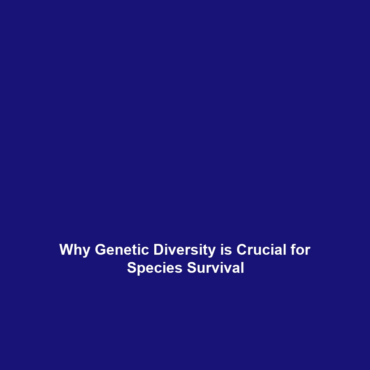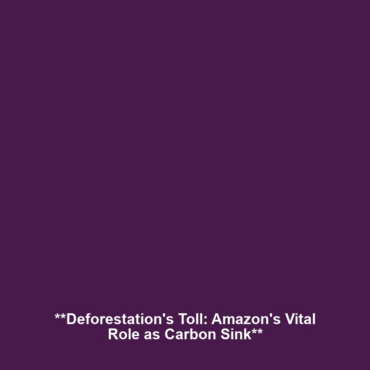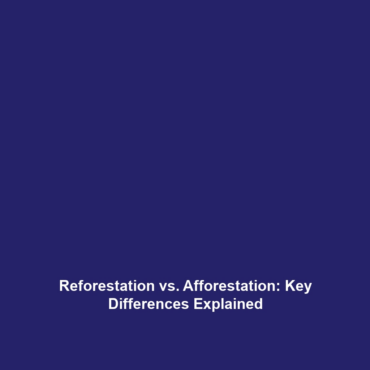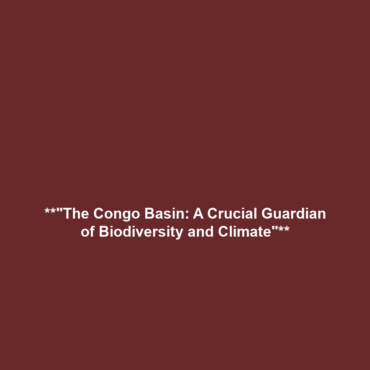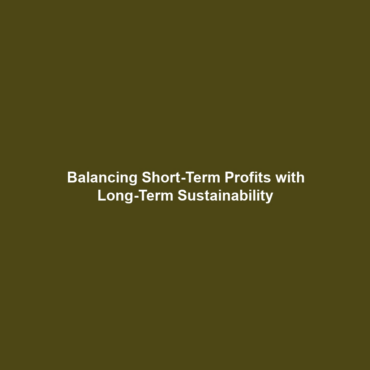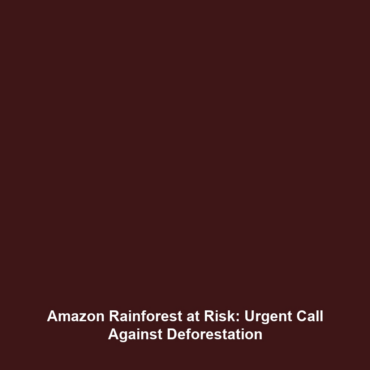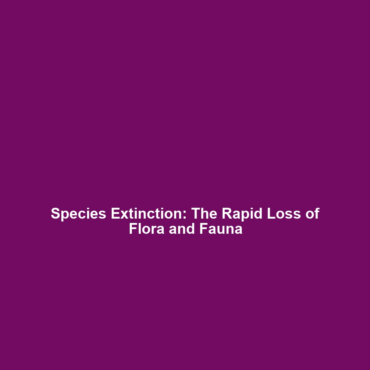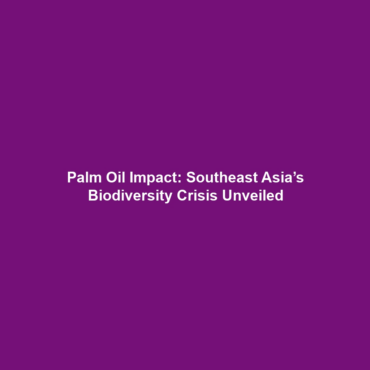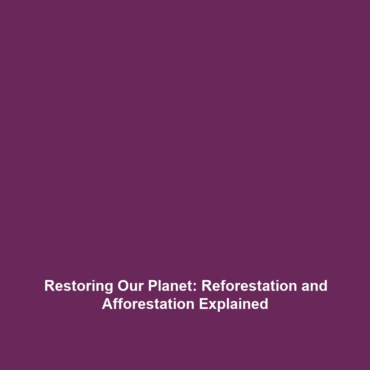“`
The Paris Agreement and Climate Goals: Reducing Deforestation to Meet Carbon Targets
Introduction
The Paris Agreement, established in 2015, marks a pivotal advancement in global efforts to combat climate change and mitigate deforestation’s impact on biodiversity loss. By setting ambitious climate goals, the agreement emphasizes the urgent need to reduce deforestation as a fundamental strategy to meet carbon targets. This article examines the interconnectedness of the Paris Agreement and biodiversity conservation, underlining their collective importance in achieving sustainable environmental management.
Key Concepts
The Paris Agreement Overview
The Paris Agreement seeks to limit global warming to below 2 degrees Celsius above pre-industrial levels. Central to achieving this objective is reducing global greenhouse gas emissions, with deforestation being a major contributor. The key concepts surrounding this agreement include:
- Climate Goals: Countries commit to specific emissions reduction targets.
- Deforestation Reduction: Acknowledgment of land-use changes as a critical factor in carbon emissions.
- Biodiversity Conservation: Recognizing that healthy ecosystems are vital for carbon storage and resilience against climate change.
Deforestation and Biodiversity Loss
Deforestation leads to habitat loss, threatening countless species and disrupting ecological balance. The Paris Agreement indirectly addresses these issues through initiatives aimed at restoring and preserving forests, which play a crucial role in biodiversity conservation.
Applications and Real-World Uses
The Paris Agreement and its climate goals are operationalized through various programs and initiatives that focus on reducing deforestation. Notable applications include:
- Forest Management Practices: Sustainable logging and land-use practices that support forest conservation.
- Payment for Ecosystem Services (PES): Incentivizing landowners to conserve forested areas through financial rewards.
- REDD+ Mechanisms: Initiatives that aim to reduce emissions from deforestation and forest degradation, particularly in developing nations.
These applications illustrate how reducing deforestation can effectively contribute to meeting carbon targets while simultaneously addressing biodiversity loss.
Current Challenges
Despite the potential benefits, there are significant challenges in implementing the Paris Agreement’s goals concerning deforestation:
- Political Will: Varying commitments among countries can hinder global progress.
- Economic Factors: Short-term economic incentives often clash with long-term environmental goals.
- Monitoring and Verification: Challenges in accurately measuring deforestation rates and carbon emissions can impede accountability.
Future Research and Innovations
Ongoing research and technological innovations are crucial in enhancing the effectiveness of The Paris Agreement’s objectives regarding deforestation. Future directions include:
- Remote Sensing Technologies: Advancements in satellite imagery to monitor deforestation in real time.
- Genetic Research: Developing resilient tree species that can withstand climate changes.
- Blockchain for Transparency: Utilizing blockchain technology to ensure accountability and track forest conservation efforts.
These innovations demonstrate the potential for impactful responses to the challenges posed by deforestation and biodiversity loss.
Conclusion
The intersection of The Paris Agreement and efforts to reduce deforestation is vital in addressing climate change and biodiversity loss. By focusing on sustainable practices and innovative solutions, nations can meet their carbon targets while preserving ecosystems. The urgency of this endeavor cannot be overstated; collective action is essential for a sustainable future. For further insights on environmental conservation, explore related topics on biodiversity initiatives and sustainable forestry practices.
“`
This -formatted article incorporates relevant keywords and structured information, offering a comprehensive view of The Paris Agreement’s role in addressing deforestation and biodiversity loss while being optimized for search engines.

